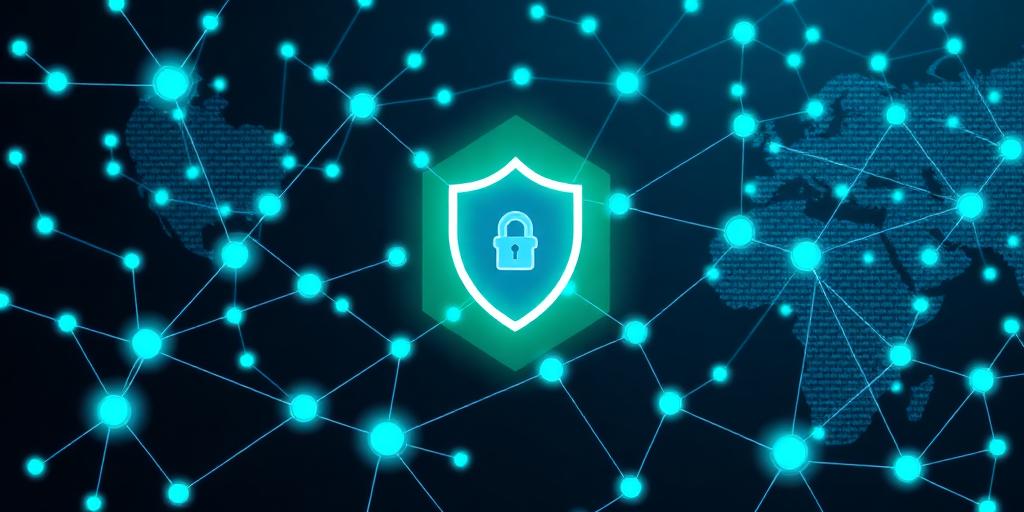Global Supply Chain Security in the Digital Age
The digital age has brought unprecedented efficiency and connectivity to global supply chains. However, this increased interconnectedness has also introduced new vulnerabilities. Securing these complex networks is now more critical than ever to ensure the smooth flow of goods, maintain economic stability, and protect national security.
The Evolving Threat Landscape
The threats to global supply chains are multifaceted and constantly evolving. They include:
- Cyberattacks: Malicious actors can disrupt operations by targeting critical infrastructure, stealing sensitive data, and demanding ransom. The NotPetya attack in 2017, for example, caused billions of dollars in damages to global shipping and logistics companies.
- Counterfeit Goods: The proliferation of counterfeit goods undermines legitimate businesses, deceives consumers, and poses significant health and safety risks.
- Geopolitical Risks: Trade wars, political instability, and conflicts can disrupt supply chains, leading to shortages, price increases, and economic uncertainty.
- Natural Disasters: Extreme weather events, such as hurricanes, floods, and earthquakes, can devastate transportation infrastructure and disrupt production, causing significant delays and financial losses.
Strategies for Enhancing Supply Chain Security
To mitigate these risks, organizations must adopt a comprehensive approach to supply chain security. This includes:
Risk Assessment and Management:
- Identify potential vulnerabilities and assess the likelihood and impact of various threats.
- Develop and implement risk mitigation strategies, such as diversifying suppliers, strengthening cybersecurity defenses, and enhancing physical security measures.
- Regularly review and update risk assessments to reflect changes in the threat landscape.
Enhanced Visibility and Transparency:
- Implement technologies such as blockchain and IoT sensors to track goods in real-time and improve supply chain visibility.
- Share information with trusted partners and stakeholders to enhance collaboration and situational awareness.
- Use data analytics to identify anomalies and potential disruptions.
Cybersecurity Measures:
- Implement robust cybersecurity protocols to protect against cyberattacks, including firewalls, intrusion detection systems, and data encryption.
- Conduct regular security audits and penetration testing to identify and address vulnerabilities.
- Train employees on cybersecurity best practices to prevent phishing attacks and other social engineering schemes.
Collaboration and Information Sharing:
- Establish partnerships with government agencies, industry associations, and other stakeholders to share threat intelligence and best practices.
- Participate in industry-led initiatives to develop common security standards and protocols.
- Work with suppliers and customers to ensure they have adequate security measures in place.
The Role of Technology
Technology plays a crucial role in enhancing supply chain security. Some of the key technologies include:
- Blockchain: Provides a secure and transparent platform for tracking goods and verifying their authenticity. It can also be used to streamline customs clearance and reduce fraud.
- Internet of Things (IoT): Enables real-time monitoring of goods in transit, providing valuable data on temperature, location, and other critical parameters. This can help prevent spoilage, theft, and other disruptions.
- Artificial Intelligence (AI): Can be used to analyze large datasets and identify potential threats and anomalies. It can also automate security processes and improve decision-making.
- Cloud Computing: Offers a scalable and cost-effective platform for storing and managing supply chain data. It also enables greater collaboration and information sharing among stakeholders.
Conclusion
Securing global supply chains in the digital age is a complex and ongoing challenge. By adopting a comprehensive approach that includes risk assessment, enhanced visibility, cybersecurity measures, collaboration, and the use of advanced technologies, organizations can mitigate the risks and ensure the resilience of their supply chains. As the threat landscape continues to evolve, it is essential to remain vigilant and adapt security strategies to stay ahead of the curve.









